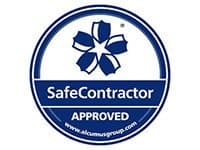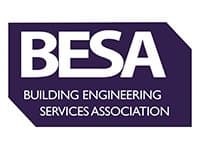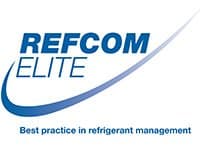With the focus on the pandemic moving from containing the virus to learning to manage it while allowing people more freedom, a growing number of businesses are opening back up. Following guidelines from the government released in early May, companies are assessing what they need to do to start seeing customers, manage risk for their employees whilst returning to operations and working safely.

A key part of this is to undertake risk assessments within the business. This looks at the potential risks and what measures are needed to offset them but filtered through the special situation that is the coronavirus outbreak.
A key area for businesses to consider as part of this risk assessment is indoor ventilation. But what makes this such an important tool in reducing the transmission of COVID-19 in businesses?
Why indoor ventilation is so important
In normal times, ventilation and air conditioning of business properties is an important part of maintaining a healthy and comfortable working environment. The aim of the system is to take stale air including exhaled breath and airborne pollutants and remove them from the space, replacing them with clean, fresh air.
A poorly ventilated room puts people at greater risk. That’s because people can be asymptomatic or haven’t started to show any symptoms yet (known as pre-symptomatic) but can be spreading the virus particles to others. While ventilation cannot entirely remove the risk, it can help to reduce this.
COVID-19 risks
With this particular virus, the risk is clear. The virus spreads through very small particles known as aerosols that are released when someone with the virus coughs, sneezes but also talks or breathes. Larger droplets are affected by gravity and fall to the floor, but smaller particles can be airborne for several hours.
It is these smaller droplets that can be breathed in and cause an infection in a new person. While it is difficult to guarantee there is no transmission in the workplace, ventilation is key in reducing the risks. It is also important that businesses understand their ventilation and air conditioning systems, how they operate and if changes are needed to reduce the risk of spreading those virus particles.
Air conditioning alone will not assist with the provision of fresh air as they focus on thermal comfort and reconditioning the existing air within the space. Key to assessing risk of each property Is an understanding of the ventilation and Introduction of fresh air Into the environment. As an Illustration a single air change Is estimated to remove 63% of airborne contaminants, after 5 air changes less than 1% of airborne contamination Is thought to remain. A primary concern will be the capacity of any ventilation system to process large number of air changes per hour.
Using HVAC during the pandemic
For starters, companies working with ventilation systems, HVAC and other similar systems should be following the guidance from REHVA, the Federation of European Heating, Ventilation and Air Condition Associations, CIBSE, the Chartered Institution of Building Services Engineers. Their guidance on how to use air conditioning systems during the pandemic is what companies are using to help formulate their own policies and evaluate the risk within their organisation.
The emphasis has moved away from one of thermal comfort towards maximising outdoor air supply as much as possible. Any air handling units with recirculation should be switched to 100% outdoor air. Mechanical ventilation systems within buildings should be running for extended operating times.
Companies should focus on increasing air supply and exhaust ventilation. This means running systems for longer or even 24/7 if this is possible. Certain areas should see ventilation at all times with toilets being a prime example. Businesses should supply the premises with as much outside air as possible and considering reducing the number of employees or Increasing the social distancing to 2-3m between employees.
A key understanding for businesses is that humidification and air conditioning have no practical effect in killing the virus. That’s because it is resistant to environmental changes unless they are above 80% humidity and over 30 degrees C in temperature. Both of these would make uncomfortable and potentially dangerous working conditions for employees.
Heat and air recirculation
Another part of the guidance is to avoid using rotary heat exchangers for the duration of the pandemic. If there are any suspected leaks in the heat recovery sections of the units, then this should be handled quickly to avoid this leaking into the air supply side of the HVAC.
Air recirculation needs to be avoided unless there are mixing dampers to stop any virus particles being redistributed. You may need to review the recirculation dampers in any ventilation system and close some dampers accordingly to prevent the mixing of air between spaces being occupied by different people. This can cause some discomfort and lead to an increase in temperature, but it is more important to stop the spread of the virus. Other measures such as opening windows and creating a natural airflow can help to offset this.
Air should not be circulated from one room to another if possible. The aim is to have each room ventilated separately by external air so there is less chance of virus particles moving from one area to another. It may even the case that if there is no way to ventilate a room apart from using air from another room, it may be that the space is closed off and use prohibited.
Do you need to change the outdoor air filters?
Studies have shown that the coronavirus particle is 80-160nm and this means it is smaller than the capture area of a Fine filter which captures 65-90% of PM1 particles. It has also been shown that the virus will aggregate with larger particles already in the filters.
If there was virus contamination of outdoor air, fine outdoor air filters offer reasonable protection for low concentrations but can allow the virus to spread outdoors. Therefore, it is a case that normal maintenance will be enough to ensure that the filters are working as designed. However, clogged or dirty filters will have a negative impact on this so should be replaced as normal.
If the room has an air cleaner in place, then as long as this has a HEPA filter, this should be adequate to help combat the virus, as they can work in a comparable way to ventilation. It has also been shown that devices using electrostatic filtration principles are quite effective in trapping virus particles and preventing them from passing into another space. But these should only be used in specific situations and expert advice on them is always recommended. Generally Increasing general ventilation to the workspace Is much more efficient.
Understanding your ventilation system
Because there are many different variations of systems in use in businesses, it is hard to give a blanket approach to reopening and handling the threat of the virus. Therefore, it is worthwhile having an assessment on the individual system to see what changes are needed and how the business can comply with the rules while making the space as comfortable for employees and customers as possible.
For expert advice and an assessment on your current system, contact Total Environmental Kooling and ensure your system is helping the fight against the virus, not hindering it.






